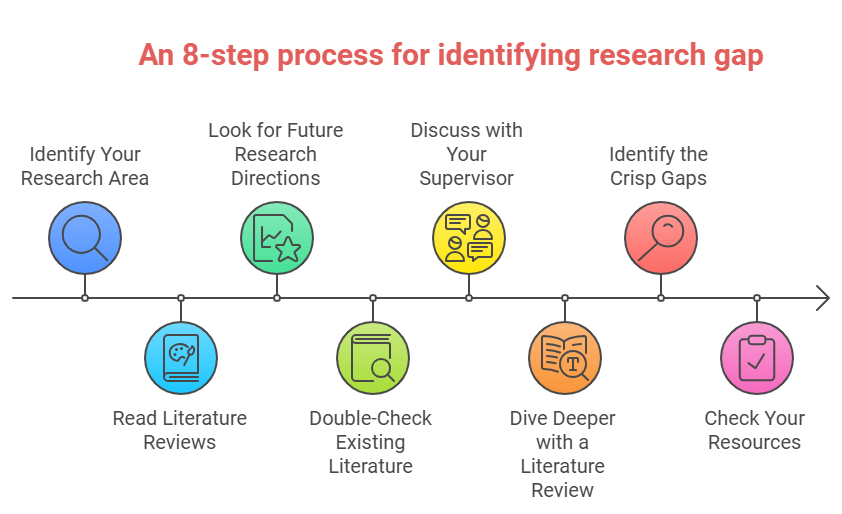One of the toughest parts of your PhD journey is finding the right research gap. It’s a critical step, but it can feel like trying to find a needle in a haystack. Trust me, I’ve been there.
When I first started my PhD, I had the same question running through my head: How do I find something new and meaningful in an area that’s already been researched to death?
After a lot of trial and error, I figured out a step-by-step process that worked for me, and I think it can help you too. Let’s break it down.

Step 1: Identify Your Research Area
Before you can find a gap, you need to know what area you’re working in. This can come from your own interests or a suggestion from your supervisor. For example, if you’re interested in cybersecurity, detecting cyber-attacks could be your area.
Step 2: Read 5-10 Literature Reviews
Now that you’ve got your area, it’s time to start reading. Find 5-10 relevant literature reviews in your field. These reviews are goldmines—they’ll give you a clear picture of what’s already been done and where the field is heading.
Step 3: Look for Future Research Directions
Here’s the part where you start finding potential gaps. As you read those reviews, pay close attention to the sections on future research. These are often filled with open questions and challenges that haven’t been fully explored yet. Try to identify 3-5 directions that could lead to a solid research gap. For example, detecting data exfiltration attacks might be an open question worth exploring.
Step 4: Double-Check Existing Literature
Before you get too excited, make sure no one has already covered these research directions. Do a quick search to see if there are any primary studies on the same topics. If something’s already been done, cross it off your list.
Step 5: Discuss with Your Supervisor
Once you’ve narrowed down your options, take them to your supervisor. They’ll help you decide which direction has the most potential. A short presentation with a few slides will make it easier for both of you to evaluate the possibilities.
Step 6: Dive Deeper with a Literature Review
Now that you’ve got your direction, it’s time to dig deeper. Conduct a full literature review on that specific topic. If no papers exist, this could mean you’ve found a brand-new area—or it could mean the topic isn’t worth researching. Make sure to evaluate carefully.
Step 7: Identify the Crisp Gaps
As you review the literature, start taking notes on gaps that stand out. These gaps won’t always be obvious, so be ready to read between the lines. For example, if you find that no one has figured out how to detect data exfiltration attacks in real-time, which could be your research gap.
Step 8: Check Your Resources
Before you commit, take stock of what you’ll need to pursue this research. Do you have access to the data, tools, or infrastructure required? It’s important to ensure you have the resources before diving in.
This process takes time, but it’s worth it. Once you find the right gap, you’ll have a solid foundation for your PhD. And who knows? You might just end up contributing something truly groundbreaking.
This method helped me stay focused and find a gap that set the stage for my research. I hope it makes your PhD journey just a little easier too.
